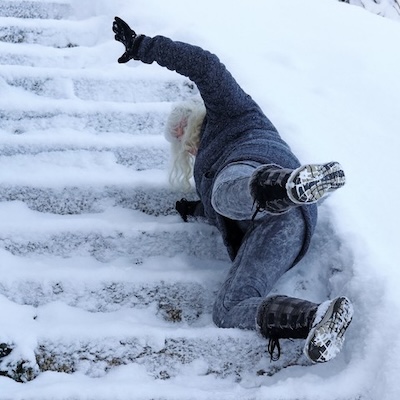 There is a great line in the movie The Paper, where the actress Marissa Tomei, heavily pregnant, sneezes and says, “You don’t appreciate bladder control until it is gone.”
There is a great line in the movie The Paper, where the actress Marissa Tomei, heavily pregnant, sneezes and says, “You don’t appreciate bladder control until it is gone.”
Balance is like that. But what do we lose when we lose our balance?
Our balance isn’t a thing – it is a process made up of 3 parts.
1. Vision – 70% of our sense of balance comes through vision. We see what is around us and how far we are above the ground.
2. Vestibular/hearing – 15% comes from our inner ear and how we locate our head in space.
3. Proprioceptive – 15% comes from sensory information through our skin, fascia and joints that locate our body in space.
All 3 parts work together, collecting and responding to information to maintain our balance as we move. Our balance process mostly works beneath our conscious attention.
We notice when we lose it
But we don’t tend to notice when each of our 3 parts work less effectively than they could. Sometimes hidden habits of how you hold your head can get in the way of how well your balance process works.
If you look down when walking up or down stairs, you are using more of your vision and less of your proprioceptive balance process.
We all manage balance with every step. Balance is not an on and off switch, it is the moment-by-moment process to keep ourselves in a preferred position while we move.
You don’t need to do high stakes balancing acts to challenge your balance. What is much more satisfying for your balance system is to set up conditions so you can find, lose and re-find your balance without any unfortunate consequences.
A good place to start is with our feet. Our feet can become bored stiff, encased in shoes and walking only on hard, level surfaces. They can become rigid and sensorily sleepy, leaving you disconnected from the ground you walk on.
When we lose this active feed of sensory information, we tend to stiffen in our feet and ankles, shutting down 1 out of 3 processes in our balance system.
Most people are concerned about balance because they are afraid of falling. Or have fallen, often multiple times.
Falling is fear-worthy and traumatic only if you don’t have the resources, ready as a reflex, to fall and land well.
There are a lot of ways to practice balance that can be helpful. People often practice standing on one foot. But standing well on one foot doesn’t necessarily improve your balance in your daily life. What is much more satisfying for your balance system is to set up conditions so you can find, lose and re-find your balance without any unfortunate consequences.
In whatever way you practice your balance….when you fall there is no time to make a plan or execute skills that you have to think about.
A good fall happens in a blink; it is over before you can think.
Balance classes that give you a protocol to follow ignore what really happens when we fall.
I teach my clients an approach to build good reflexes and feed all 3 processes of their balance system, for a more dynamic, flexible and ultimate safer way to nurture your balance and to land well when you fall.
Check out Marlene’s story in learning to fall lightly
Sign up to my weekly newsletter for more practical information about balance and moving freely, without fear of falling. I am offering a Balance Series online starting January 2025 - I only offer this series once a year! I will share information on how to register for the series with my subscribers.